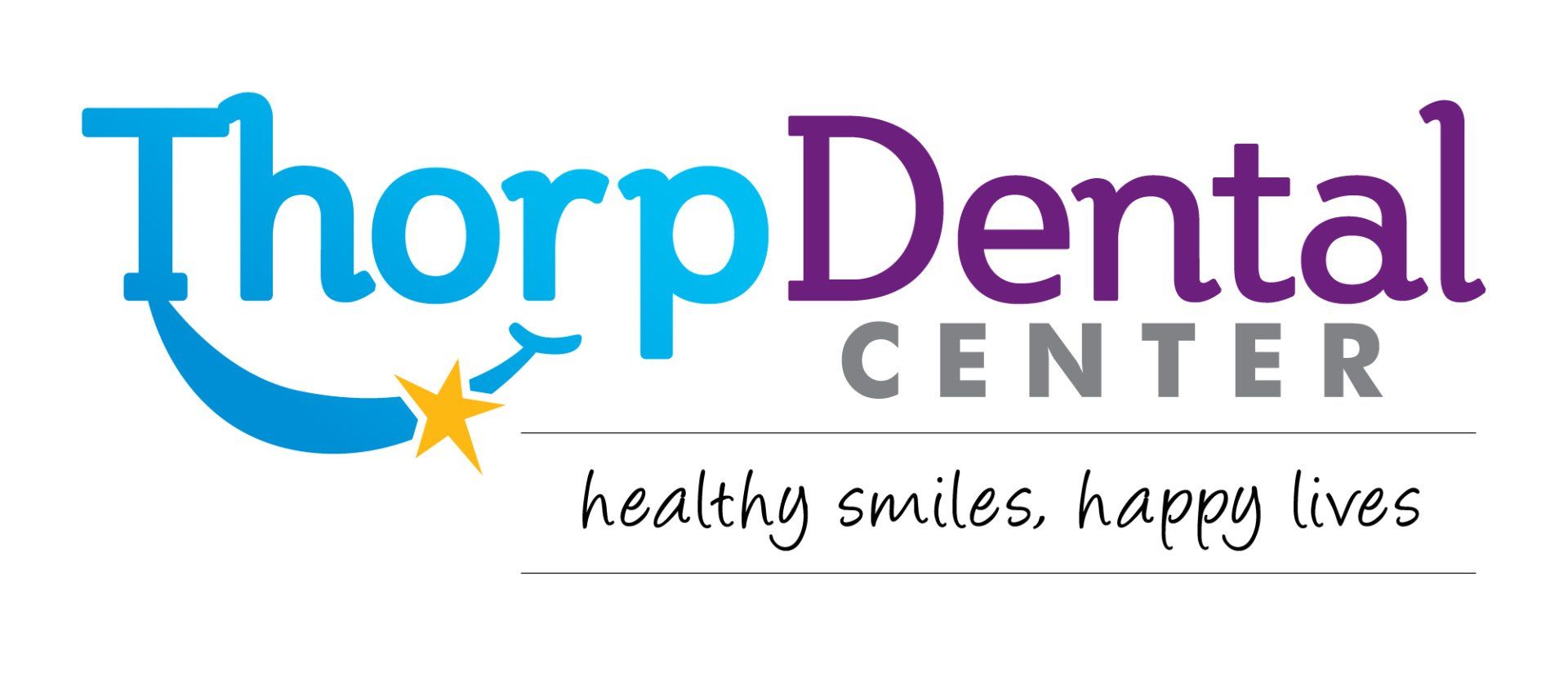Oral Hygiene
Oral Hygiene
Since 1974 | Patient Referral Program | Locally Owned
Since 1974Patient Referral ProgramLocally Owned
How to Brush
Oral Hygiene
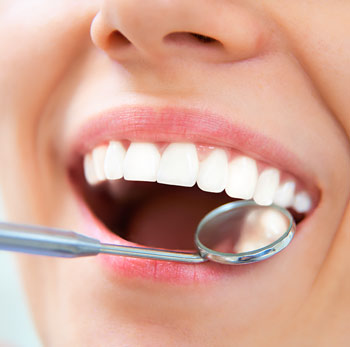
What does good oral hygiene mean to you: Flashing a pearly-white smile? Having fresh smelling breath? Feeling that squeaky-clean sensation all around your teeth and tongue? All of these are important indicators about the state of your oral health — and they're often the first thing people notice when they meet you. But getting your teeth, gums and mouth really clean, and maintaining that healthy state throughout the day (and in the months between professional dental cleanings) can be challenging.
Of course, there's much more to oral hygiene than just a bright smile. Take tooth decay, for example: Despite all our efforts, it's still the single most common chronic disease of childhood, affecting two-thirds of U.S. kids aged 12-19. It is 5 times more common than asthma, 7 times more common than hay fever — and it's almost totally preventable. Several other diseases commonly affect the mouth, including periodontitis (gum disease), which, if left untreated, can lead to tooth loss and possibly systemic (whole-body) inflammation.
In many ways, the health of the mouth mirrors the health of the body. Diseases in other parts of the body often cause symptoms we can observe in the mouth; likewise, oral maladies (like tooth loss) not only reduce an individual's quality of life, but may also lead to problems in other areas. That's another reason why maintaining good oral hygiene is so important.
Regular dental visits play a critical role in maintaining your oral health — not only to find and remedy any problems with teeth or gums, but also to assess the general condition of your oral health, point out potential trouble spots, and offer suggestions for preventive care. In between visits, the best way to keep your teeth clean and free of disease, your gums pink and healthy, and your breath fresh, is a program of daily oral hygiene. Your regular routine should include the following:
- Brush and Floss. You should brush at least twice a day and floss at least once daily. This will help remove plaque, a bacteria-laden biofilm, from the surfaces of your teeth. The bacteria in plaque can turn sugars from food into acids, which attack the tooth's enamel and cause tooth decay. Some bacteria can also cause gingivitis and other gum diseases.
- Make sure you're getting the proper amount of fluoride. Fluoride strengthens tooth enamel — it's essential for children's developing teeth, and helps prevent decay in both kids and adults. Even if your municipal water is fluoridated, you should always use fluoride toothpaste. If more fluoride is needed, it can be applied directly to your teeth at the dental office.
- Limit between-meal snacks. Sugary snacks are the perfect fuel for decay-causing bacteria — and when eaten throughout the day, they keep the acid constantly on the attack. So give your mouth a break, and (if you allow them) limit sugary treats to mealtime.
- Use an appropriate mouth rinse — especially if you're at increased risk. Therapeutic mouth rinses do more than temporarily mask bad smells or tastes in your mouth — they can improve your overall oral hygiene. While some over-the counter products offer primarily “cosmetic” benefits, therapeutic rinses contain anti-bacterial and anti-cariogenic (cavity-fighting) ingredients. Using a therapeutic mouthrinse has been proven to control plaque bacteria and prevent cavities better than brushing and flossing alone.
- Quit tobacco. Whether smoked or smokeless, tobacco use greatly increases your risk of oral cancer, gum disease, and tooth decay (not to mention heart disease and lung cancer… but you already knew that). If you use tobacco, ask us how to quit now.
- Examine your mouth regularly. Once you've established a regular routine, you'll quickly recognize any changes in your mouth — like chipped teeth, red or swollen gums, or unusual sores. If you find something of concern, let us know. Early treatment offers the best chance to remedy many problems.
A major goal of modern dentistry is to help you keep your teeth and gums healthy for a lifetime. By following a conscientious program oforal hygiene, you have the best chance at making this goal a reality.
Related Articles:
How to Brush
Top
If you're like most people, you probably learned how to brush as a child… and chances are, you haven't thought about it much since then. That's understandable — but there may come a point when we find our oral hygiene techniques could use improvement. Here are a few tips on the proper way to brush your teeth… plus, a reminder of why we do it.
First, the reasons why: Brushing is an effective way to remove plaque — a sticky, bacteria-laden biofilm that clings stubbornly to your teeth. The bacteria in plaque produce acids, which erode the tooth's enamel and may lead to tooth decay. Plaque can also cause gum disease and bad breath. In fact, it's believed that over 90% of dental disease is caused by plaque accumulation alone.
Besides removing plaque, the fluoride in toothpaste strengthens tooth enamel and makes teeth more decay-resistant. Plus, brushing makes your mouth feel cleaner and your breath smell fresher. While there is no single “right” way to brush your teeth, there are a number of techniques that can help you get them squeaky-clean. So why wait — let's take a refresher course in brushing right now!
Proper Brushing Technique
- To begin, select a small-headed, soft-bristled toothbrush, grasp it gently with your fingers (not your fist), and squeeze on a pea-sized dab of fluoride toothpaste.
- Hold the bristles gently against the outside of your top teeth, near the gum line, at about a 45-degree angle upward.
- Sweep the brush gently back and forth over teeth and gums in soft strokes — or, if you prefer, use an elliptical (circular) motion to clean the teeth.
- Be sure to clean the spaces between teeth: You can use a sweeping motion to brush food particles away from the gums.
- When you have done one brush-width, move to the adjacent area of your teeth and repeat. Keep going until you have finished cleaning the outside of the whole top row of teeth.
- Move to the bottom teeth. Repeat the procedure, tilting the brush down toward the gum line at about 45 degrees. Finish cleaning the outside of the bottom teeth.
- Go on to the inside of the top teeth. Tilting the bristles up toward the gums, clean the inside of the top teeth with gentle but thorough strokes.
- Move to the inside of the bottom teeth. Tilt the brush down and repeat the procedure.
- Now it's time for the chewing surfaces: Holding the bristles flat against the molars, clean the ridges and valleys of the back teeth. Do this for all the top and bottom teeth.
- Finally, brush your tongue gently to remove bacteria and freshen breath.

Check Your Work
How good a brushing job did you do? One way to get an idea is by simply running your tongue over your teeth: If they feel slick and smooth, then chances are they're clean. If not, you should try again. To know for sure whether you're brushing effectively, you can use a “disclosing solution” — a special dye that highlights plaque and debris your brushing missed.
One common error is not brushing for long enough: two minutes is about the minimum time you need to do a thorough job. If you have music in the bathroom, you could try brushing along with a pop song; when the song's over, you're done! But no matter your musical taste, good brushing technique can go a long way toward maintaining tip-top oral hygiene.
Variations for Comfort
If you're having trouble with the two-finger method, here's another way to try flossing: Just tie the same amount of floss into a big loop, place all your fingers (but not thumbs) inside the loop, and work it around your teeth with index fingers and thumbs. All the other steps remain the same.
Once you've got the basics down, there are a few different types of flosses you can try, including flavored, waxed, and wider width. Some people find waxed floss slides more easily into tighter gaps between teeth or restorations — but it may not make that satisfying “squeak” as it's cleaning. Others prefer wide floss for cleaning around bridgework. But whichever way works best for you, the important thing is to keep it up!
How to Floss
Top
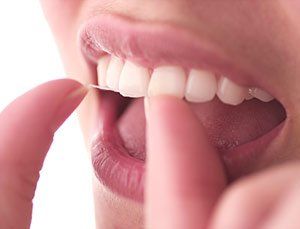
You always brush twice a day, avoid sugary snacks between meals, and go to the dentist regularly. Do you still have to floss your teeth?
The short answer: Yes, at least once a day. Flossing is probably your single most important weapon against plaque, the clingy bacterial biofilm that sticks to the surfaces of your teeth. Plaque is the principal cause of tooth decay; but it is also the cause of periodontitis (gum disease), bad breath, and other maladies. Brushing is a good start — but flossing removes plaque in places a brush can't reach, like the small gaps between teeth and under the gums. It also polishes tooth surfaces and decreases the risk of gum disease.
Some people may think they don't have time to floss, but once you get the hang of it, flossing only takes few minutes. If you are going to floss only once a day, it's best to do it at night just before going to sleep. That's because there is less saliva present in your mouth when you are sleeping, so plaque is more concentrated and potentially more harmful. Just in case you never really learned proper flossing techniques, here's a step by step approach including some easy tips for doing a great job.
Proper Flossing Technique
- Cut off a piece of floss about 18 inches long. Wind it around the middle finger of both hands leaving a gap of around three or four inches. You will now be able to use different combinations of your thumbs and index fingers to correctly position the floss between your teeth for all areas of your mouth.
TIP: The most common mistake people make while flossing is that they tighten their lips and cheeks making it impossible to get their fingers into the mouth. Relax your lips and cheeks.
- Now, guide the floss gently into the space between your teeth.
TIP: Even if the gap is tight, try not to snap the floss into your gums as you're inserting it. A side-to-side sawing motion is good to use here, but only when slipping the floss gently between the teeth.
- There are two sides to each space between your teeth and you must floss each side separately so as not to injure the triangle of gum tissue between your teeth. Run the floss up and down the surface of the tooth, making sure you are going down to the gum line and then up to the highest contact point between the teeth. Apply pressure with your fingers away from the gum triangle, letting it curve around the side of the tooth forming the letter “C” with the floss.
TIP: You want your fingers as close to the front and back of the tooth as possible so both fingers move in harmony up and down until you hear a squeaky clean sound. This is easier with unwaxed floss. The smaller the amount of floss between your fingers, the more control you have flossing.
- Next, move your fingers to the top contact area between the teeth and slide across to the other side of the space. Apply pressure with your fingers in the opposite direction and repeat.
- Slide the floss out from between the teeth. If it's frayed or brownish, that's good: you're removing plaque! Unwind a little new floss from the “dispenser” finger, and take up the used floss on the other finger.
- Repeat the process on the next space between teeth. Work all around the mouth — and don't forget back sides of the last molars.
Variations for Comfort
If you're having trouble with the two-finger method, here's another way to try flossing: Just tie the same amount of floss into a big loop, place all your fingers (but not thumbs) inside the loop, and work it around your teeth with index fingers and thumbs. All the other steps remain the same.
Once you've got the basics down, there are a few different types of flosses you can try, including flavored, waxed, and wider width. Some people find waxed floss slides more easily into tighter gaps between teeth or restorations — but it may not make that satisfying “squeak” as it's cleaning. Others prefer wide floss for cleaning around bridgework. But whichever way works best for you, the important thing is to keep it up!
Interdental Cleaning Devices
Top
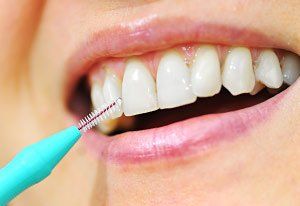
Almost everyone understands the importance of regular brushing and flossing to their oral health. You've heard it many times before, at office visits and checkups: Proper oral hygiene is your first line of defense against tooth decay and gum disease. Yet, while most of us brush regularly, many people don't floss as often as they should… or at all!
Why not? Sometimes, it's because we don't have the manual dexterity to handle the floss, or because braces or partial dentures get in the way; or, perhaps we just never got in the habit. Yet proper cleaning of the interdental areas (the small spaces between teeth) is crucial — and here's why:
Consistent brushing with fluoride toothpaste has been proven effective at removing dental plaque from the tooth's surfaces and making them more resistant to decay. But regular toothbrushes simply can't get into the small gaps between teeth, or the tiny crevices where teeth meet gums. Unfortunately for our oral health, that's exactly where tooth decay and gum disease starts — and that's where the tools called “interdental cleaners” can help.
There are several different types of interdental cleaners available, including special brushes and irrigation devices (commonly called “water picks”). None of them, by themselves, are a substitute for brushing and flossing. However, as part of a regular program of oral hygiene, they can be effective at fighting plaque and reducing the incidence of tooth decay and gum disease.
The Interdental Brush
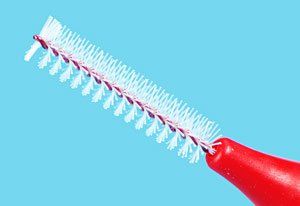
This specially designed toothbrush (sometimes called an interproximal brush or proxabrush) can be successfully utilized to clean the small gaps between teeth, as well as the gums and the areas around braces, wires, or other dental appliances. Because it has a handle not unlike a standard toothbrush, many people with limited dexterity find it easy to use. Plus, numerous clinical studies have demonstrated its effectiveness at reducing plaque and controlling gingivitis (gum inflammation).
The cleaning surface of an interdental brush is similar in shape to a small, conical pipe cleaner. Its short bristles radiate from a thin central wire, which is small enough to pass through a very tight space. The brushes are available with both coated and uncoated wire, and come in different widths to accommodate an individual's particular dental anatomy. When needed, they can also be used to apply antibacterial or desensitizing agents to certain areas of the teeth or gums.
Oral Irrigation Devices
Available to consumers for over 50 years, these devices (sometimes known as water jets or water picks) can also play a role in interdental hygiene. While their popularity has gone up and down over the decades, many studies have shown that they provide a safe and effective method of diluting the acids produced by plaque. Irrigation devices typically use pulsed or steady jets of pressurized water to remove food particles from the hard-to-clean interdental spaces, as well as in some subgingival (below the gum line) pockets.
Proper brushing and flossing is still generally considered the gold standard of at-home oral hygiene. But if you have trouble flossing regularly — or if you're at increased risk for developing dental or periodontal disease — then using these interdental cleaners might be right for you.
Related Articles:
Mouth Rinses
Top
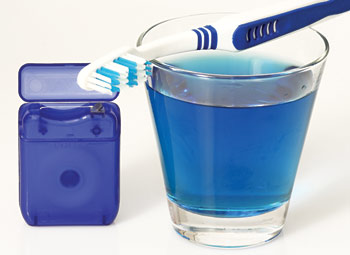
Numerous studies have shown that using an appropriate mouth rinse, in conjunction with regular brushing and flossing, is an easy and effective way for you to improve your overall oral health. As part of a regular program of oral hygiene, mouth rinses (which are sometimes called mouthwashes) can be effective at reducing plaque, controlling bad breath, and helping to prevent tooth decay and gum disease. There are a myriad of mouth rinses lining the drugstore shelves, and they are available in both prescription and over-the-counter (OTC)formulations. Which one is best for you? That depends on what benefit you expect to get from using it.
It's important to keep in mind that many off-the-shelf mouth rinses are primarily cosmetic: That means, they may (temporarily) make your mouth taste or smell good, but they don't offer any lasting benefit to your oral health. There's nothing wrong with that — as long as you weren't expecting anything more. But if you've been told that you are at risk for tooth decay or gum disease, you'll want to use a mouth rinse that has proven clinical benefits.
Therapeutic Mouthrinses
Mouthrinses that offer oral-health benefits are considered therapeutic. These fall into two general categories: anti-cariogenic rinses, which are designed to prevent tooth decay (and thus dental caries, or “cavities”); and anti-bacterial rinses, which help control the buildup of plaque bacteria in your mouth. Some products may even offer both types of protection.
To help prevent tooth decay, anti-cariogenic mouthrinses use an ingredient you're probably already familiar with: fluoride. This is often in the form of a .05% sodium fluoride solution. Because it's a liquid, the rinse can get all around your teeth — even into spaces the smallest brush can't reach.
Fluoride has been consistently proven to strengthen tooth enamel, which protects against decay; it can even reduce tiny lesions on teeth where a cavity may form. There's hardly anyone who couldn't use some extra help in the fight against cavities — but if you've been told you may be at a higher risk for tooth decay, or if you have difficulty brushing and flossing, then an anti-cariogenic rinse is a good choice for you.
Anti-bacterial mouthrinses generally contain ingredients (like triclosan, essential oils, or the prescription medication chlorhexidine) that help to control the microorganisms found in plaque. Plaque, a sticky, bacteria-laden biofilm, occurs not only on the surfaces of the teeth, but also in other parts of the mouth. Rinsing with an anti-bacterial solution has been shown to provide a greater reduction in plaque than brushing and flossing alone. As tools in the fight against gum disease (gingivitis) and tooth decay, anti-bacterial mouthrinses may be a good step toward improving your oral hygiene.
Choosing A Mouthrinse
If you're shopping for an over-the-counter therapeutic mouthrinse, look for the ADA (American Dental Association) seal on the label; it means that the product has been evaluated and proven effective by an independent panel of dental experts. If a mouthrinse has been prescribed for you, you should carefully follow the usage instructions. (Note, however, that due to labeling rules, prescription mouthrinses may not be eligible for the ADA seal.) Mouthrinses can benefit most people, but they generally aren't recommended for children under the age of six, who may swallow them.
Related Articles:
Oral Hygiene for Kids

Teeth can last a lifetime if you take care of them right — and the best time to start is just as soon as they begin appearing. By establishing good oral hygiene routines for your children right from the start, you'll give them the best chance of keeping their teeth healthy — forever.
Tooth decay, the major cause of dental trouble that can eventually lead to tooth loss, is actually an infectious disease caused by bacteria. If it takes hold, it can form a cavity in the enamel and then progress deeper into the tooth — causing discomfort, difficulty eating and speaking, and a need for fillings or root canal treatment. The good news is that tooth decay (also called caries) is completely preventable.
The primary route to good dental health is plaque removal. Plaque is the sticky, whitish film that builds up on teeth in the absence of effective oral hygiene. Decay-causing bacteria thrive in plaque, where they break down any sugar that lingers in the mouth. In the process, they produce acid byproducts that erode teeth. This is how a cavity begins. What are the most effective techniques for plaque removal and decay prevention? That depends on the age of your child.
Babies
Babies can develop a form of tooth decay known as early childhood caries. This occurs when they are allowed to go to sleep with a bottle that's filled with anything but water. The sugars in formula, milk (even breast milk) and juice can pool around the teeth and feed decay-causing bacteria. When it comes to bedtime soothing, a pacifier or bottle filled with water is safer for developing teeth — that is, until about age 3. At that point, sucking habits should be gently discouraged to prevent orthodontic problems from developing later on.
Brush your baby's first teeth gently with a small, soft-bristled toothbrush, using just a thin smear of fluoride toothpaste, at least once a day at bedtime. Before a tooth is fully erupted, you can use a water-soaked gauze pad to clean around the tooth and gums.
Make sure your child has his or her first dental visit by age 1. There, you can learn proper hygiene techniques; have your youngster examined for signs of early decay; and get a recommendation for fluoride supplements if needed.
Children
Starting at age 3, you can begin teaching your child to brush with a children's toothbrush and no more than a pea-sized amount of fluoride toothpaste. But remember, children will need help with this important task until about age 6, when they have the fine motor skills to do an effective job themselves.
It's also extremely important to start encouraging healthy dietary habits at this time. Your child will have less plaque buildup and decay if you place limits on soda and sugary snack consumption. As a parent, you can model this behavior to instill it in your child. After all, monkey see, monkey do! Any sugary treats that are allowed should come at mealtimes, not in between. This will ensure your child is not creating favorable conditions for oral bacteria to grow around the clock.
At your child's regular, twice-yearly dental checkups and cleanings, topical fluoride can be applied to strengthen tooth enamel and make it more resistant to erosion and decay. If necessary, dental sealants can be applied to the back teeth (molars) to prevent food particles and bacteria from building up in the tiny grooves where a toothbrush can't reach
Teens
At this point, your children have the primary responsibility for maintaining their day-to-day dental health — but you can continue to help them make good dietary and behavioral choices. These include drinking plenty of water and avoiding soda, sports drinks and energy drinks, all of which are highly acidic; avoiding tobacco and alcohol; and continuing to visit the dental office regularly for cleanings and exams. This is particularly important if your teen wears braces, which can make it more difficult to keep teeth clean.
Remember, it's never too soon to help your child develop good oral hygiene habits that will last a lifetime.
Related Articles:
Tips to Prevent Cavities
Top
Cavities are little holes in teeth that can eventually cause big problems. They form when tooth-eroding acid attacks a tooth's protective outer covering (enamel). This acid mainly comes from two sources: your diet, and certain oral bacteria that thrive in the absence of effective oral hygiene. If cavities are not treated promptly, decay-causing bacteria can get further into the tooth, leading eventually to root-canal problems and even tooth loss. The good news is that cavities are completely preventable — meaning it is truly possible to keep all of your natural teeth for life! Here are our top three tips to keep decay away:
Brush & Floss Every Day
Cavities are little holes in teeth that can eventually cause big problems. They form when tooth-eroding acid attacks a tooth's protective outer covering (enamel). This acid mainly comes from two sources: your diet, and certain oral bacteria that thrive in the absence of effective oral hygiene. If cavities are not treated promptly, decay-causing bacteria can get further into the tooth, leading eventually to root-canal problems and even tooth loss. The good news is that cavities are completely preventable — meaning it is truly possible to keep all of your natural teeth for life! Here are our top three tips to keep decay away:
Pay Attention to Your Diet
Certain foods and beverages are no friends to your teeth, and soda tops the list. Soda, sports drinks, and so-called “energy drinks” are all acidic — even the sugar-free varieties. The acids they contain attack tooth enamel and make your teeth more prone to decay. Fruit juices can also be very acidic. Drinking water is much better for your dental health, not only because it has a completely neutral pH (is non-acidic), but also because it helps replenish your saliva — which has natural cavity-fighting properties. Sugary and starchy foods (cookies, candy, donuts, and chips) are also a problem — especially when they are not promptly cleaned from your mouth. They nourish the oral bacteria that cause cavities and raise the acidity level in your mouth.
See Your Dentist Regularly
Routine professional cleanings and exams are a great way to maintain excellent oral health. Your dental hygienist can clean areas of your mouth that you can't reach with your toothbrush or even with floss. We can check for early signs of tooth decay and take prompt action. What's more, we can recommend specific preventive treatments if you are particularly prone to cavities. These include in-office fluoride treatments and dental sealants, both of which are quick, easy and effective procedures. Special mouthrinses might also be recommended. Working together, we can make sure your oral hygiene routine is all it should be and that decay is kept at bay.
Related Articles:
Toothpaste
Top
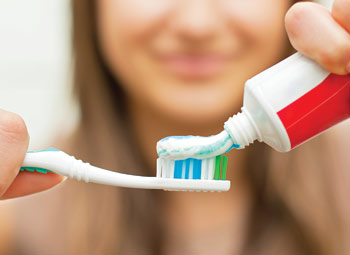
Toothpaste: It's something most people use every day, but rarely give much thought to — except, perhaps, when choosing from among the dozens of brands that line the drugstore shelf. Is there any difference between them? What's toothpaste made of… and does it really do what it promises on the box? To answer those questions, let's take a closer look inside the tube.
The soft, slightly grainy paste that you squeeze on your brush is the latest in a long line of tooth-cleaning substances whose first recorded use was around the time of the ancient Egyptians. Those early mixtures had ingredients like crushed bones, pumice and ashes — but you won't find that any more. Modern toothpastes have evolved into an effective means of cleaning teeth and preventing decay. Today, most have a similar set of active ingredients, including:
- Abrasives, which help remove surface deposits and stains from teeth, and make the mechanical action of brushing more effective. They typically include gentle cleaning and polishing agents like hydrated silica or alumina, calcium carbonate or dicalcium phosphate.
- Detergents, such as sodium lauryl sulfate, which produce the bubbly foam you may notice when brushing vigorously. They help to break up and dissolve substances that would normally be hard to wash away, just like they do in the laundry — but with far milder ingredients.
- Fluoride, the vital tooth-protective ingredient in toothpaste. Whether it shows up as sodium fluoride, stannous fluoride or sodium monofluorophosphate (MFP), fluoride has been conclusively proven to help strengthen tooth enamel and prevent decay.
Besides their active ingredients, most toothpastes also contain preservatives, binders, and flavorings — without which they would tend to dry out, separate… or taste awful. In addition, some specialty toothpastes have additional ingredients for therapeutic purposes.
- Whitening toothpastes generally contain special abrasives or enzymes designed to help remove stains on the tooth's surfaces. Whether or not they will work for you depends on why your teeth aren't white in the first place: If it's an extrinsic (surface) stain, they can be effective; however, they probably won't help with intrinsic (internal) discoloration, which may require a professional whitening treatment.
- Toothpastes for sensitive teeth often include ingredients like potassium nitrate or strontium chloride, which can block sensations of pain. Teeth may become sensitive when dentin (the material within the tooth, which is normally covered by enamel, or by the gums) becomes exposed in the mouth. These ingredients can make brushing less painful, but it may take a few weeks until you really notice their effects.
What's the best way to choose a toothpaste? The main thing you should look for is the American Dental Association (ADA) Seal of Acceptance on the label. It means that the toothpaste contains fluoride — and that the manufacturer's other claims have been independently tested and verified.
But once you've chosen your favorite, keep this bit of dental wisdom in mind: It's not the brush (or the paste) that keeps your mouth healthy — it's the hand that holds it. Don't forget that regular brushing is one of the best ways to prevent tooth decay and maintain good oral hygiene.
Related Articles:
Our Facebook Feed
Privacy Policy
| Do Not Share My Information
| Conditions of Use
| Notice and Take Down Policy
| Website Accessibility Policy
© 2024
The content on this website is owned by us and our licensors. Do not copy any content (including images) without our consent.
